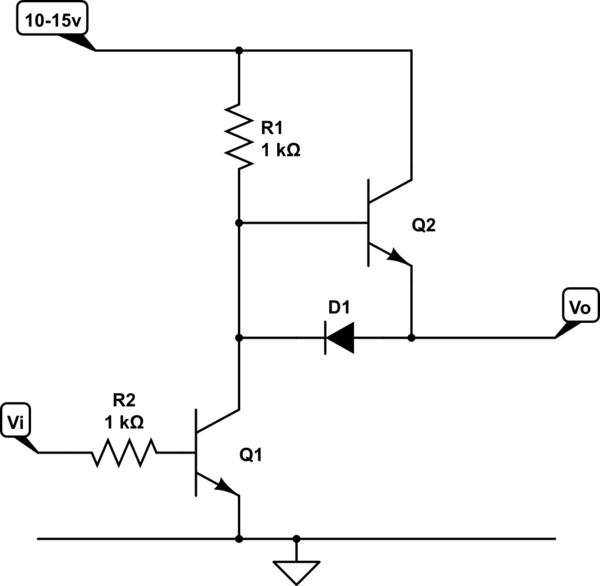
1- What is the purpose of D1 in this circuit?
2- Can i connect the PWM output of MCU to Vi through a diode, to protect the MCU from 12V supply of the drive circuit? (e.g. if Vi got accidentally shorted to 12V)
3- Do i need to decrease R2 value if i connect the input through a diode, to compensate for diodes voltage drop, and maintain the base-emiter current? would decreasing R2 value to 560 ohms suffice?
(MCU's output high level is 5V, and i'm using TIP122 for BJTs)
